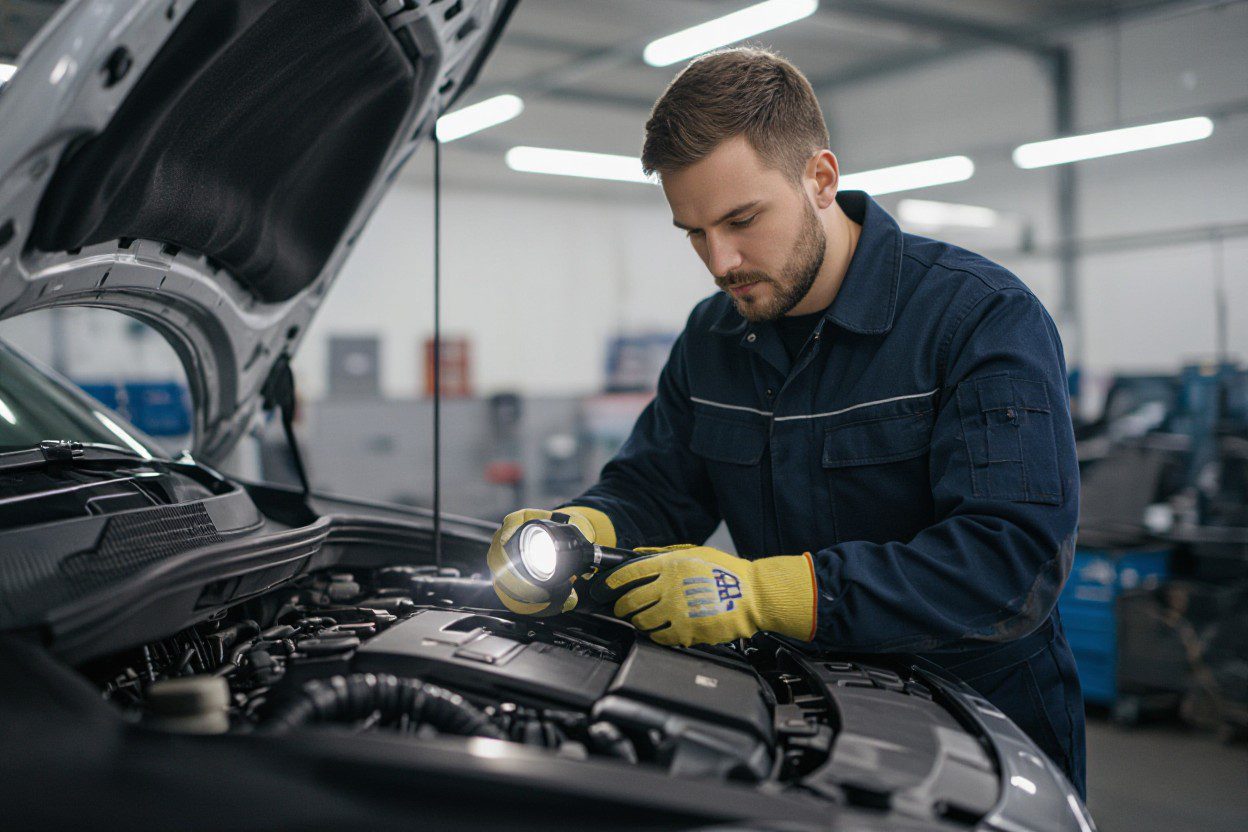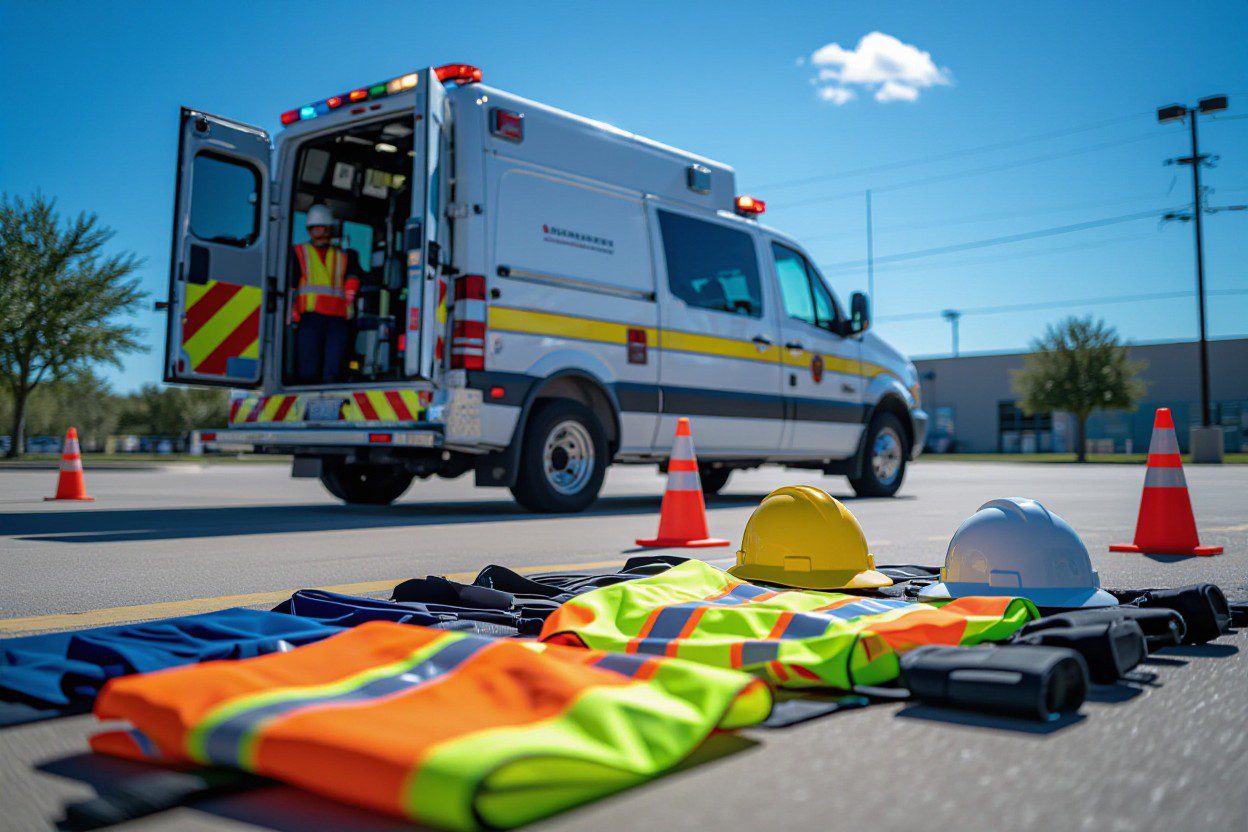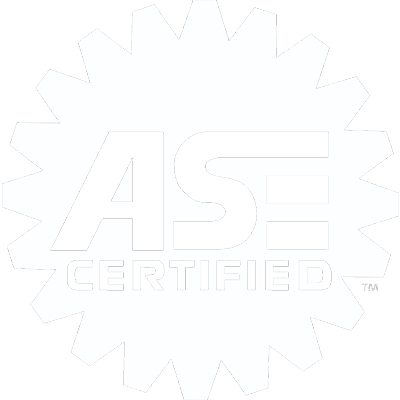Safety ensures you and others stay protected on the road; at Aloha Auto Repair, you can follow a clear safety vehicle inspection checklist to verify lights, brakes, tires, fluids, and windshield condition. You should bring your car for a Texas vehicle inspection when required, and our technicians guide you through each step so your vehicle meets standards and your maintenance priorities are addressed efficiently.

The Imperative of Regular Vehicle Inspections — Aloha Auto Repair Guide
You should schedule a safety vehicle inspection at least every six months or every 6,000 miles; our safety vehicle inspection checklist at Aloha Auto Repair covers brakes, tires, lights, fluid levels, belts, and suspension so small issues don’t become emergencies. You’ll reduce unexpected downtime and align with requirements like the Texas vehicle inspection for owners who travel or relocate, and our technicians log findings so you can track recurring items and plan repairs before they affect safety or fuel economy.
Understanding the Risks of Neglect
Failing to inspect worn brake pads, underinflated tires, corroded battery terminals, or cracked belts increases the likelihood of roadside breakdowns and longer stopping distances; in a 2023 Aloha Auto Repair audit of 480 inspections you’d find tire or brake concerns in roughly one-third of vehicles, and electrical issues in about 12%. You’ll risk higher repair bills, possible citations if moving into jurisdictions with strict emissions or safety rules, and compromised occupant protection during collisions.
Statistically Supported Benefits of Inspections
Data from our shop shows proactive inspections cut roadside failures: after implementing a mandatory pre-season safety vehicle inspection checklist for 200 fleet vehicles, you’d see a 35% drop in tow-outs and a 22% reduction in repair costs within 12 months. You’ll notice improved fuel economy from properly inflated tires and longer component life from timely fluid and filter changes, delivering measurable savings that justify routine inspections.
Digging deeper, if you pay roughly $90–$120 per inspection and avoid even one major tow-and-repair event averaging $950, the break-even point is low; for a 50-vehicle fleet that adopted regular inspections, Aloha Auto Repair recorded $18,400 in avoided emergency repairs and 1,200 hours of recovered uptime last year, translating to lower liability exposure and more predictable maintenance budgeting for your business or personal vehicle plan.
Aloha Auto Repair — Essential Components of a Safety Vehicle Inspection
You rely on a clear mobile safety vehicle inspection Allen TX to catch hidden failures before they become roadside emergencies; Aloha Auto Repair covers braking, lighting, steering, tires, emissions and cabin safety, and aligns documentation for fleet audits and cross-state needs such as Texas vehicle inspection. Schedule inspections every 6 months or 6,000 miles for high-use vehicles, and keep records of repairs and dates to support warranty claims and insurance requirements.
Mechanical Systems that Matter
Brakes get pad-thickness checks (replace under ~3 mm), rotor wear measurement and hydraulic leak inspection; tires require tread-depth readings—2/32″ is the legal minimum, 4/32″ recommended for wet roads—and pressure checks (typically 30–35 psi); steering and suspension get play and bushing tests, while belts, hoses, battery and cooling systems are inspected for wear, cracks, and proper voltages to prevent roadside failures.
Safety Features and Compliance Requirements
Seat belts, airbags and child restraint anchors must latch and show correct integrity; exterior lamps need proper intensity and alignment, turn signals and brake lights must pass circuit tests, and mirrors, horn and windshield wipers are evaluated for function. You log any faults on the safety vehicle inspection checklist so repairs are addressed before registration or fleet audits.
State rules vary: Texas vehicle inspection requires inspection of lamps, mirrors, windshield, wipers, horn and seat belts, and certain counties add emissions testing; you should retain inspection receipts and clear NHTSA recalls. For commercial fleets, Aloha Auto Repair documents each checklist item with photos and serial numbers to meet audit trails and insurer expectations.
Environmental Considerations
You inspect for oil, coolant and fuel leaks that threaten soil and marine environments, verify catalytic converter and EV battery condition for emissions or thermal risks, and include vapor-recovery checks; Aloha Auto Repair contains, documents and recycles recovered fluids to limit contamination and regulatory exposure during a pre-trip safety vehicle inspection.
Federal EPA and local runoff regulations require proper disposal—used oil, antifreeze and solvents must go to certified recyclers—so Aloha Auto Repair records volumes and manifests during service. You keep those logs to demonstrate environmental compliance if an audit or a Texas vehicle inspection raises cross-jurisdictional questions.
Aloha Auto Repair — The Inspection Process: Step by Step
Follow a clear sequence: document check, exterior walkaround, engine-bay and undercarriage exam, road-test, then report and recommendations. Use the Aloha Auto Repair safety vehicle inspection checklist to log failures, estimate repairs, and confirm items for a Texas vehicle inspection if applicable. Typical inspections cover lights, tires, brakes, suspension, emissions wiring and OBD-II codes to give you a complete, prioritized action list.
Pre-Inspection Preparation
Gather registration, proof of insurance, and your key fob, then top off fluids and set tire pressure to the manufacturer’s spec (commonly ~32 psi). Bring any prior inspection reports and note recent symptoms—vibrations, noises, or dashboard lights. Use Aloha’s safety vehicle inspection checklist to mark items before arrival so your technician can focus on diagnostics and reduce shop time.
Conducting the Physical Inspection
Start with exterior checks: measure tire tread (under 2/32″ fails), inspect sidewalls for bulges, test all bulbs, and check windshield chips. Lift the vehicle to inspect brakes (pad thickness under 3 mm needs service), rotors for scoring, steering joints for play, and suspension mounts for leaks or damage. Scan for active OBD-II codes and note any illuminated warnings.
Use a 12.6 V resting battery reading as a baseline; perform a load test if voltage drops below ~12.0 V. Road-test at varied speeds to confirm brake effectiveness, ABS engagement, steering pull, and unusual rattles. Inspect exhaust for leaks or loose hangers and verify emissions components per Texas vehicle inspection standards; document everything on your checklist with photos when possible.
Interpreting Inspection Results
Review findings by severity: safety-critical failures (brakes, steering, tires <2/32″) get top priority; secondary items (wipers, minor lights) are next. Your report will show pass/fail items, estimated repair costs, and recommended timelines. For Texas vehicle inspection compliance, flagged safety items must be corrected before a passing certificate is issued.
Prioritize repairs that prevent roadside failure: replacing worn brake pads typically runs $150–$400, tires $80–$200 each, and wheel alignment $80–$120. Use the safety vehicle inspection checklist to decide immediate fixes versus scheduled maintenance; Aloha Auto Repair can provide written estimates and timelines so you can budget and get back on the road safely.
Navigating Regulatory Standards and Compliance
Federal and state rules shape the safety vehicle inspection checklist you follow at Aloha Auto Repair; FMVSS are codified in 49 CFR Part 571 and enforced by NHTSA, while states add their own mandates. You should expect inspections to verify brakes, lighting, tires, steering and emissions where applicable, and to document failures electronically to the state database so your repairs clear registration holds and reduce liability exposure.
Key Legislation Impacting Vehicle Safety
Federal rules like FMVSS set baseline crashworthiness and component standards, and you’ll find state laws layering on periodic checks—Texas enforces a Texas vehicle inspection program under the Department of Public Safety and Texas Transportation Code provisions that require annual safety inspections at licensed stations. You benefit when inspectors reference specific statutes during failures and remediation, for example citing faulty brake performance or noncompliant lighting to justify re-inspection.
The Role of Certification and Licensing
State certification for inspectors and licensed inspection stations assures your comprehensive vehicle safety inspection checklist is executed by trained personnel using calibrated tools; many shops also prefer ASE-certified technicians to add technical credibility. You should look for stations that submit inspection results electronically to the state and maintain visible licensure, which speeds registration and reduces the chance of rejected inspections.
Certification entails recurring requirements: background checks, documented training, equipment calibration logs, and periodic audits by the state. You face potential penalties, suspended inspection privileges, or fines if audits find systemic failures; Aloha Auto Repair keeps technician credentials current and maintains audit-ready calibration records so your vehicle passes Texas vehicle inspection and any federal compliance spot checks.
Best Practices for Vehicle Owners
Maintaining Inspection Records
Keep both paper and digital copies of every safety vehicle inspection checklist, repair invoice, VIN record, odometer reading and inspector name; store them for at least three years so you can track recurring issues and warranty claims. You should note dates of brake, tire and suspension work — for example, “brakes replaced 08/2024 at 42,300 miles” — and upload PDFs to your phone or cloud so Aloha Auto Repair can access a history during future service.
Scheduling Inspections and Choosing Providers
Plan your Texas vehicle inspection annually and book 1–2 weeks before your registration deadline to avoid delays; peak months (spring and late summer) fill faster. Verify provider certification, request an itemized safety vehicle inspection checklist before work begins, compare three local quotes, and prefer shops with transparent warranties and clear turnaround times when you choose Aloha Auto Repair or any certified station.
Ask each provider for the inspector’s license number and the exact items on the safety vehicle inspection checklist they’ll evaluate—lights, brakes, steering, tires, horn, mirrors, emissions if applicable. Expect an honest inspection to take 20–45 minutes; decline rush jobs that skip road testing. If a shop offers a mobile Texas vehicle inspection, confirm they use calibrated tools and provide the same paperwork as an office visit.
Common Red Flags to Watch For
Watch for incomplete paperwork, mismatched VINs, persistent warning lights after service, new fluid leaks post-repair, or repairs done without clear invoices. Suspiciously low prices can hide substandard parts or omitted steps; a legitimate safety vehicle inspection checklist should list failed items and recommended fixes. You should expect clear before-and-after notes and a signed inspection certificate from the inspector.
When you encounter red flags, request a re-inspection within seven days, keep all receipts, and get a second opinion if noise, pulling or dashboard alerts persist above normal driving speeds (e.g., vibration at 60+ mph). Report fraudulent or uncertified Texas vehicle inspection activity to the Texas DPS and share your experience with Aloha Auto Repair so they can advise on next steps and help validate proper corrections.
Conclusion — Aloha Auto Repair Safety Wrap-Up

Conclusively, you can rely on Aloha Auto Repair to conduct a thorough safety vehicle inspection using our comprehensive safety vehicle inspection checklist; our technicians guide you through the process and ensure your vehicle meets Texas vehicle inspection standards so your driving remains safe and compliant.
FAQ
Q: What is a safety vehicle inspection and how does it differ from a Texas vehicle inspection?
A: A safety vehicle inspection is a comprehensive visual and functional check of a vehicle’s systems to confirm it is safe to drive. At Aloha Auto Repair we evaluate brakes, suspension, steering, lights, tires, seat belts, windshield condition, wipers, and other items that directly affect on-road safety.
Q: How long does a safety vehicle inspection take and what does it typically cost?
A: Most safety vehicle inspections take 30–90 minutes depending on vehicle condition and whether additional testing or road checks are needed. Basic inspections at Aloha Auto Repair commonly fall on the shorter end; larger trucks or vehicles with obvious issues require more time.
Q: What items are included on a typical safety vehicle inspection checklist?
A: A standard safety vehicle inspection checklist covers: brakes (pads, rotors, fluid), tires (tread depth, pressure, sidewalls), steering and suspension (play, shocks, mounts), exterior and interior lights (headlights, brake, turn signals), windshield and wipers, mirrors, horn, seat belts and airbags (visible condition), fluid levels and leaks, battery and terminals, exhaust condition, and visible frame or body damage.
Q: What happens if my vehicle fails parts of the safety vehicle inspection?
A: If items fail during a safety vehicle inspection, Aloha Auto Repair will provide a written list of failed or marginal components, an estimate for recommended repairs, and a priority ranking for safety-related items.
Q: How should I prepare my car for a safety vehicle inspection at Aloha Auto Repair?
A: Prepare by checking and topping off fluids, inflating tires to the recommended pressure, replacing burnt-out bulbs, and clearing heavy clutter from the cabin and trunk so technicians can access components. Bring your vehicle registration and any recent maintenance records if available.
Keep your car road-ready with our safety vehicle inspection checklist designed for island driving peace of mind. Schedule your inspection today and drive with confidence knowing your vehicle meets every safety standard. Contact Aloha Auto Repair and make safety your top priority!
Also read:
Why Should You Book Car Diagnostics Service? The Ultimate Guide to Avoiding Costly Repairs
Expert-Backed Car Electrical Repair Guide for a Smooth Fix
How Premium Automotive Repairs Service Can Extend the Life of Your Car






